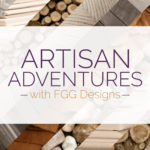
 Listen to the Podcast
Listen to the Podcast
Click play to listen to our full episode or to automatically receive future podcast releases, subscribe to us on iTunes!
Below is a quick summary of what was discussed plus any resources we may have mentioned.
Show Notes
You’ve finally chosen what tools to buy and have spent a lot of money to get them, so why do people at this point neglect the regular maintenance needed to keep them in good shape? Tool maintenance is a very crucial, yet largely overlooked, thing. Despite what you may think, a sharp tool, is a safe tool, especially when it comes to carving.
Maintaining Your Tools
Before we discuss ‘how and what to use’ to sharpen and maintain your tools, we are going to talk quickly about how to prevent your tools (as best as you can) from becoming dull. Here are some tips to help with that. Firstly, and most importantly, put your tools in a sheath! We cannot stress that enough, it doesn’t take much to blunt your tools so keep the blade’s edge out of contact with anything dangerous by keeping them safely tucked away behind a sheath. You can either make a sheath yourself (we suggest out of leather) or buy them for a fairly inexpensive price online. We mentioned last week that you want your knife, in particular, to be as sharp as possible and it doesn’t take much to lose that sharp edge. If it were to fall to the ground or if a stone or a piece of metal of even sandpaper were to land on the blade you could dull it very easily. Therefore, taking two seconds to put it in a sheath will save you much and will mean having to sharpen a lot less. Not to mention the safety implications behind why you should sheath but we will discuss that in a later episode.
Okay so you’ve now gotten and are using your sheath, what other things can you do to help prevent your tools from dulling? These may seem obvious but keeping them in mind will prove to be very beneficial for you. Number one: DON’T DROP YOUR TOOLS! See we told you they might be obvious. If you are very aware that dropping your tool could be disastrous for you, it might make you concentrate more and hold your tool with a tighter grip. Secondly, don’t drop anything on your tool, which if you are being diligent to always sheath your tools this shouldn’t be a big issue. Basically, you want to think of the blade’s edge as your main object to protect, protect it at all costs!
But I’ve got some bad news, even if you are doing all these things, your blade will start to dull over time. You can thank the second law of thermodynamics for that! In all seriousness, the everyday use of your tools will naturally start to dull them, which is why it is important to keep a regular schedule of sharpening your tools, so let’s get into that now.
Sharpening
Since Shaun carves almost every day, he has chosen to spend 5 minutes every morning sharpening his knives to get them ready for the day ahead. Like everything in life, it is a lot easier to correct something the moment it starts to go wrong. If you leave your tools to fully dull before you ever sharpen them it’ll take more time to sharpen and not just that, but your time carving will be a lot harder with a dull knife.
We use a sharpening set by a brand called “KME Sharpening” and we love it. Every morning Shaun would use the smoothest stone in the kit to just refine his blade’s edge and he is good to go. However, if you can’t afford to buy a sharpening kit, the next best thing is sandpaper, particularly wet and dry sandpaper. Using the 800, 1000, 1200, and 2000 grits, wrap them around a smooth flat piece of wood and begin to work your way through them as you would on a sharpening stone (starting with the 800 grit). Once your blade is nice and sharp, it’s time to hone the edge, this is done by a process called “stropping”.
To strop your blade, you would need leather, both the leather and the suede side are used in stropping, (we have two pieces of leather glued to a flat piece of wood, the suede side face up one side and the leather side face up on the opposite side).
Some people choose to use a stropping compound on the suede side which acts as a very fine grit sandpaper (around a 12,000 grit) however we seem to get by fine without it. Always start with the suede side first and end lastly on the leather side. For help on knowing good sharpening and stropping techniques we would recommend this video on YouTube.
Summary
After all these steps are put into practice, you should be left with a well maintained and sharp tool and you’ll be incredibly thankful for it! As we said in the beginning a sharp tool is a safe tool, a dull tool will struggle to carve wood, but it’ll still carve you pretty well. When your knife is nice and sharp, you will need less effort to make a cut and therefore you’ll have more control over your knife. Not to mention it’ll just be a lot easier to carve and therefore a lot nicer on your hands and wrists. These are just a few of the many reasons we consider tool maintenance a very important part of carving.
As always, if you have any questions please feel free to email us at info@fggdesigns.com.
